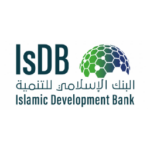About us
The High Volume Transport Applied Research Programme (HVT) is a seven-year, £18 million investment by the UK Foreign, Commonwealth & Development Office (FCDO) to undertake research into the complex and interrelated issues of sustainable transport development across Africa and South Asia.
Transport is key to economic development in low- and middle-income countries. It allows markets to move. It ensures economies move on and it helps people move up. But developing infrastructure that meets the needs of LMICs is complex, costly and comes with many pressures including climate change and competitive demands for limited resources.
Despite the pressure to make good decisions, there is a lack of applicable evidence to inform important investments and planning. The evidence base is often out of date and inadequate.
HVT is providing a new body of research to help inform the decisions of policy-makers and planners and make road and rail transport greener, safer and more accessible, affordable and inclusive and to ultimately make good investment decisions that will help drive economic development and poverty reduction.
Our research powers change in three ways:
- We create an understanding for decision makers and practitioners of the issues and challenges to creating sustainable and resilient transport.
- We build the knowledge, skills and attitudes of researchers, policy makers and others involved in our work
- Our research leads directly and indirectly to instrumental changes in policy, programme and transport practices.
Click here for our dissemination strategy
And our work is focused in the following areas:
HVT was established in 2019 and is delivered through a Programme Management Unit led by the international development consultancy DT Global.

















